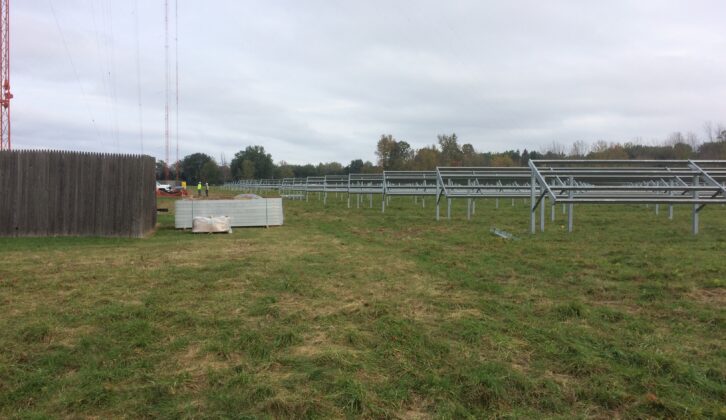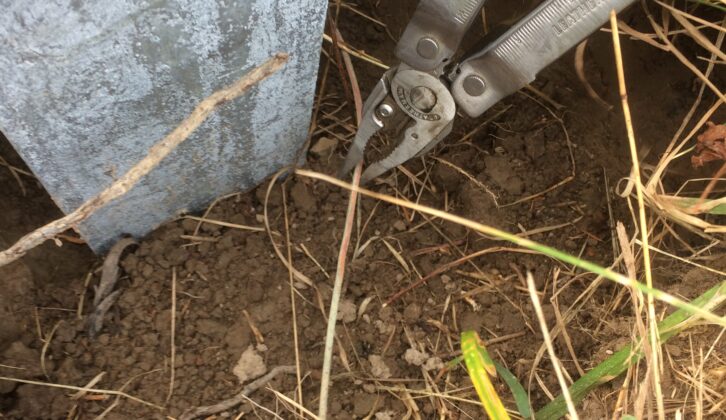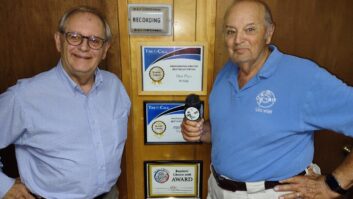A current Radio World ebook explores trends in sustainability in radio broadcasting; this story is an excerpt.
Go digging online and you’ll find that a massive amount has been written about sustainability in media over the past two years, though it’s not always easy to get past generic corporate language. Here’s a taste of how this topic has shown up in radio broadcasting and related sectors.
ESG at IHM
In 2023 iHeartMedia published an “Environmental Social Governance Report,” also giving insight into how a larger corporation seeks to present efforts to their stakeholder communities, including investors.
“[W]e recognize the importance of minimizing our environmental impact and we have already implemented a number of important actions,” iHeart stated.
“We have begun to assess our Scope 1 and Scope 2 Greenhouse Gas emissions in alignment with the GHG Protocol created by the World Resources Institute and World Business Council for Sustainable Development. We place a priority on being responsible stewards of our planet and [also] are opting to follow the Sustainability Accounting Standards Board’s Implementation Supplement for Greenhouse Gas Emissions …”
The company said it “continually looks for ways to rally the communities in which we live and work to protect the environment and to conserve energy and natural resources.” It said its radio stations use PSAs, programs, local long-form shows and live events to inform its audiences and incite action.
Noting that keeping stations on the air 24/7 takes energy, iHeart said it has implemented a number of actions, including transitioning from on-premise hardware systems to cloud-based platforms to decommission energy-intensive servers; using energy-efficient laptops instead of desktops; replacing fluorescent lighting with LED lights in its offices; and gaining LEED certifications for its executive offices and several other facilities, “as well as strategically decreasing our overall real estate footprint.”
It said it pursues green building certification for existing spaces and ongoing modernization projects. “Additionally, … we will seek opportunities to create or improve efficiencies and set related targets, and we are continually looking for ways to reduce our environmental footprint at our stations, executive headquarters and at our live events, and to model the proper behaviors for our employees.”
On the studio operations side, the company offered these specifics:
“We will be transitioning our audio playout platform from NexGen to Sound+, which we anticipate will result in the elimination of more than 300 physical servers and more than 3,000 physical PCs across our markets,” it wrote in 2023.
Also, “We are reducing the scale of a number of our market facilities over the next 24 months. We expect that reductions in square footage in these facilities will reduce power consumption proportionately.”
It said, “Migrating to digital promotion and more virtual platforms has allowed for a reduction in station automobiles and less emissions and waste. This is an area we will be closely evaluating in the future.”
It wrote that it had transitioned many of its tech hardware systems, including traffic and scheduling, streaming, playout and sales systems, from dedicated on-prem hardware to cloud-based platforms. “By decommissioning more than 500 physical servers and moving corresponding workloads to more efficient cloud-based service providers, we have experienced a 41.5% reduction in power consumption this year [2023] compared to the same period in 2018.”
Vertical Bridge
Vertical Bridge is the largest private owner and operator of communications infrastructure in the United States. It also says it was the world’s first carbon-neutral tower company.
The big site owner said it has worked to eliminate paper waste and single-use plastics from its corporate headquarters and replaced building and tower lighting systems with lower-energy LED systems. It uses carbon credits to offset emissions.
“In June 2020, Vertical Bridge became the first telecommunications tower company to be certified as a CarbonNeutral company in accordance with The CarbonNeutral Protocol, the leading global framework for carbon neutrality. We have remained committed to our carbon neutrality status and have been recertified every year since to date.”

It listed several projects in North America that it supports to help with reducing or removing greenhouse gasses. In the related area of wildlife sustainability, it said it also is working to make tower lighting less dangerous to birds, “taking advantage of every opportunity to safely replace older, steady-burn, incandescent lights on any towers we own or manage with avian-friendly systems.
Motion sensor lighting is also being deployed on shelters and compounds at the base of our towers to reduce the number of birds and bats drawn to the nighttime security lighting.”
The photo shows a drone’s eye view of a Vertical Bridge facility in Brunswick, Tenn., as published by Radio World in 2021.
American Tower
American Tower also has highlighted its activities on this front.
“In 2023, we further reduced our greenhouse gas emissions, largely due to the continued success of our Power-as-a-Service program,” said President/CEO Steve Vondran in a press release in July.
He said its PaaS initiative focuses on renewable energy generation, energy efficiency and energy storage systems.
The company said it achieved “continued reduction” in combined scope 1 and 2 GHG emissions and that it increased on-site renewable energy generation by 40% globally across 18,000 sites, “producing more than 100 gigawatt hours of clean energy.”
It also highlighted its efforts to protect bird’s nests and open “digital communities” that enhance education, healthcare access and financial literacy in underserved markets. The company also joined the World Economic Forum’s 1t.org platform, a pledge to plant 1 trillion trees by 2030, and said that it facilitated the planting of some 150,000 trees in 2023.
Read the report American Tower published in July.
Click on the picture to toggle between photos of the WROW’s solar array.
Make Way for Solar
AM station WROW, owned by Pamal Broadcasting, installed a major solar array a few years back. Engineer Paul Thurst wrote about it on his blog.
“This project required many steel mounting posts to be driven into the ground around the AM towers. I don’t even know how many, but I would hazard a guess of over 300. Each one of those mounting posts was hand-dug down a depth of 6 to 10 inches to look for ground wires.”
In one of the photos we see a ground wire being moved to make way for one of the mounting posts. Read the story on Thurst’s blog.
DAB+ Is Green
Advocates for DAB+ highlight the power savings that that digital format can bring.
In 2021 a from Germany described DAB+ as “green radio” and said that broadcasting a single service, between 70 and 90 percent of energy could be saved by switching from FM to DAB+.

It was done by the Bavarian Regulatory Authority for Commercial Broadcasting (BLM) and the Bavarian Public Broadcaster, Bayerischer Rundfunk (BR), in partnership with network operators and receiver manufacturers. It compared the energy consumption of broadcasting and receiving radio programs via FM and DAB+.
The studies showed that, with a comparable supply, the energy consumption when broadcasting a program via DAB+ is significantly lower than FM.
BR would save around 75 percent per station, while Antenne Bayern would save 85 percent in energy if its audio service were broadcast exclusively via DAB+.
Read an English-language translation of the report.
“More Work Is Needed”
Radiocentre, an advocacy group for commercial radio in the U.K., has highlighted efforts of broadcasters in the country.
“The commercial radio sector is made up of a numbers of stakeholders who are reviewing their own policies,” it states.
“Global has information on their Global Goodness initiative and Bauer published details on their focus on sustainability. We also proudly work in conjunction with the Advertising Association’s Ad Net Zero initiative, of which we are a member.”
It noted that a joint government-industry Digital Radio and Audio Review examined the energy consumption and environmental impact of the radio sector.
“Transmission and radio devices are the main energy elements under consideration. The review notes that ‘More work is needed to estimate the overall energy usage of new and existing digital radio devices and the options for new technology to reduce energy use still further.”
Convention Best Practices
This fall organizers of NAB Show New York called on attendees and exhibitors to consider ways to be more eco-friendly.
They said the show is eliminating 3,000 linear feet of aisle carpet, “reducing 1.3 tons of carbon emissions from trucking and keeping .6 mile of tape out of the landfill.” They’re using recyclable cardboard signs, offering lanyard and literature recycling and using water urns rather than single-use bottles when possible.

The show also posted a list of things attendees can do to be more eco-friendly and “green your stay.” Read those here.
Exhibitors can help, too. The organizers encouraged the use of sustainable and recyclable materials for booth construction and graphics, minimizing printed materials in favor of digital alternatives.
They discouraged giveaways that are likely to end up in the trash and suggested that booths use LED lighting, turning it off when not needed.
Read the show’s sustainability guidelines for exhibitors. NAB added that the Javits Center itself maintains a donation program that makes it easy for exhibitors to donate unwanted items after the event.
Separately, the National Association of Broadcasters honors excellence in sustainability at its annual spring NAB Show though we spotted no radio broadcasters among the recipients.
In 2024 the awards featured corporations like Vitec, Harmonic, Prime Focus Technologies, Bitmovin, Irdeto, Ross Video, SiliconCore Technology, Akamai and TVU Networks. (Read about that here.)
Greening of Streaming
An organization called Greening of Streaming was created to address concerns about the energy impact of the streaming sector. Learn more.
“We provide a forum for the global internet streaming industry to develop better engineering and to foster collaboration through the supply chain as we create a great experience for the consumer without wasting energy,” it states.
“For streaming to continue to change the world for the better, it needs to focus on best practices around energy consumption.” It states: “No GreenWashing! Through peer engagement, members seek to do everything they can to make accurate public statements about energy efficiency in relation to streaming.”
Founder Don Robinson has pushed for something called the LESS Accord, or “Low Energy Sustainable Streaming Accord.” According to a 2023 article by TV Tech, Robinson envisions a broad industry agreement that one day asks more of video quality than the traditional benchmarks associated with the art and science of encoding.
Casting a Flinty Eye on AI
The website “The Flint,” published by Lake Shadow Media, focuses on the sustainability impact of media and the content supply chain.
“Most entertainment industry sectors have some sustainability initiative in place,” it states. “But we’ve found that communication among these various initiatives and organizations is poor, resulting in much duplication of effort, little coordination, and changes taking place at a very small scale.”
“If you’re going to try something as ill-advised as making a living in the entertainment industry, you need an embarrassing amount of unrealistic idealism and an utterly asinine talent for brushing off failure — luckily these are just the qualities needed for saving the future.”
Among its partners are suppliers and technology organizations like Anton Bauer, Ateliere, Bridge Technologies, Greening of Streaming, Quantec and Vizrt.
The site’s Neal Romanek noted the emphasis on AI during the recent IBC Show. “[E]ven as exhibitors were touting their green credentials out one side of their mouth, they were hawking AI-powered wares out the other,” he wrote.
“AI burns energy. A lot of it. We all get excited about the future of renewable energy, but hyperscalers are buying out that renewable energy right now, to power their rapidly expanding data centers. Youre town needs to get in line behind AI if you want green energy to heat your home. Would we so proud of our AI-enabled workflows if we had to put ‘Now with higher emissions!’ in our ad copy?”
He quoted Ad Signal CEO Tom Dunning saying he believed that AI was the biggest threat to sustainability right now. [Read that post.]
Power Down Under
Tieline’s manufacturing base is in Perth, Western Australia, which the company says its the sunniest capital city in Australia.
In 2018, 146 solar panels were installed above the office. Since then, it said, all codecs made by Tieline rely heavily on renewable energy during the manufacturing process.
“Installation of solar panels saves a significant amount in energy costs every year,” said CEO Will McLean, shown.

“Solar energy is good for the planet, good for reducing manufacturing costs, plus it allows us to pass on these savings to customers.”
Tieline said its products adhere to WEEE and ROHS performance standards, ensuring lead-free electronics and promoting safe disposal practices. “In addition, new technologies such as multi-unicasting and multicasting allow a single codec to potentially replace thousands of dollars of additional codec equipment in studio racks. This reduces a network’s carbon footprint and allows scarce resources to be allocated and deployed where there is the greatest need.”
Savings Via Hardware
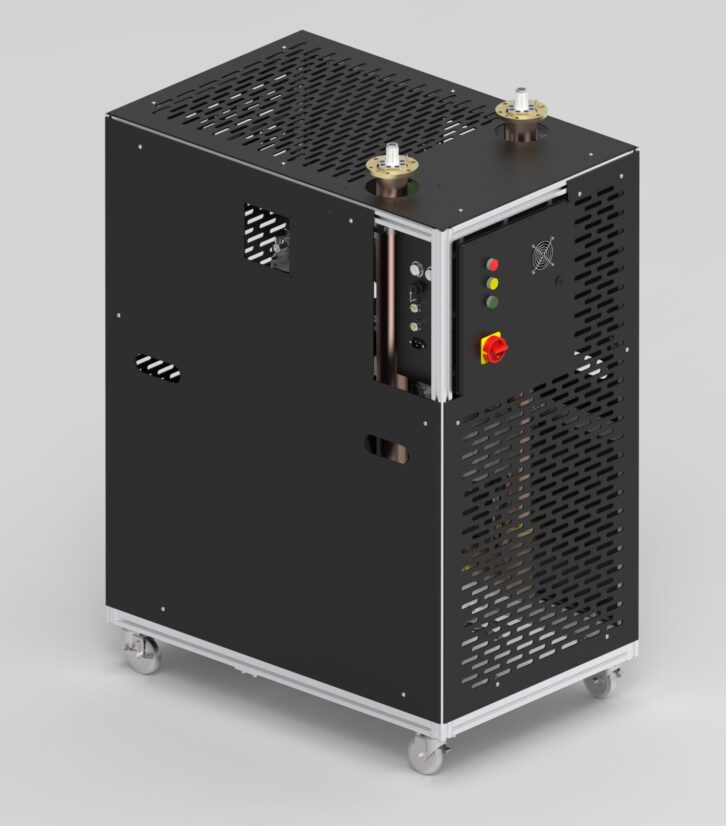
Dielectric this year unveiled a “green, cost-reducing load solution,” featuring a closed-loop cooling system that protects RF system components from failures that can cause harm to the transmission system and shelter.
It senses rising RF power and temperature levels. Because the load remains turned off 95 percent of the time, the company said, it is environmentally friendly.
Jutel in the Cloud
Automation software company Jutel has preached the benefits of cloud-based radio production platforms.
“These platforms promote a reduction in physical resources, minimize waste, lower energy consumption, and support remote work, all of which contribute to a reduced environmental footprint,” the company states. It published a commentary on “Five Sustainability Benefits of Cloud-Based Radio Production.”
Jutel has a section of its website devoted to its own ESG efforts. Under E for environmental, the company says it calculates its carbon footprint annually, favors remote meetings, encourages commuting by bicycle, uses renewable energy and minimizes its use of raw materials, water and energy.
Wool Without Sheep
Acoustic treatment company Vicoustic said it designed a broadcasting studio with sustainable and eco-friendly solutions for Portuguese national radio station Antena 1 RTP.
The manufacturer said its products use Virtual Material Technology, which are recyclable and provide safety from fire. VMT is made of VicPET Wool, produced mostly from recycled plastic.
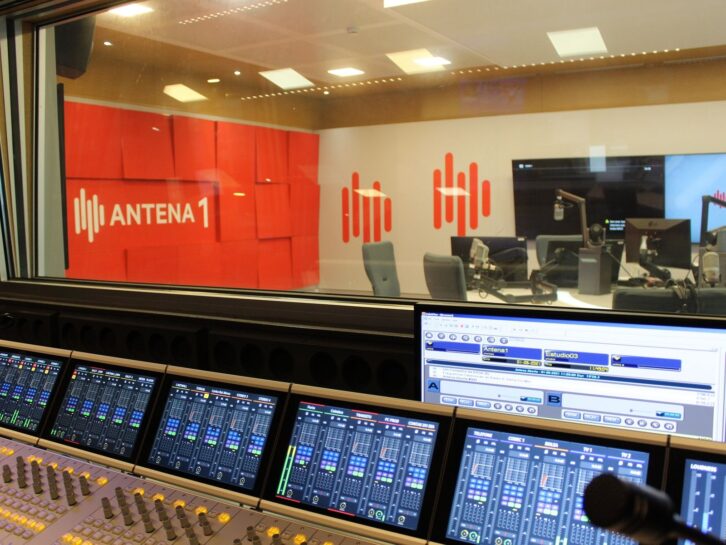
“VicPET Wool is a non-woven textile with superb acoustic performance but predominantly made from recycled plastic bottles. Through extensive research and testing, Vicoustic fine-tuned this material that can now found across a range of Vicoustic products.”
The project was done in Studio 3, the main newsroom in the national television and radio complex HQ of RTP in Lisbon.
